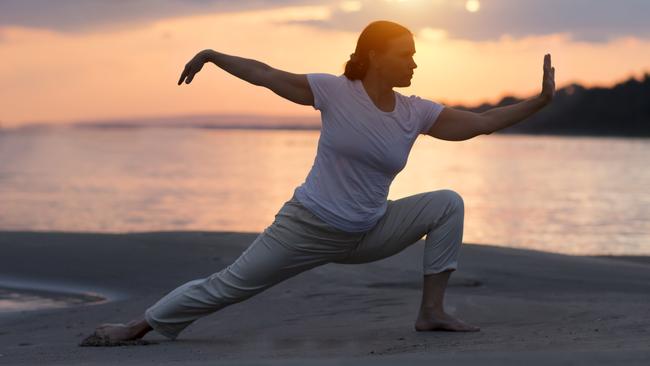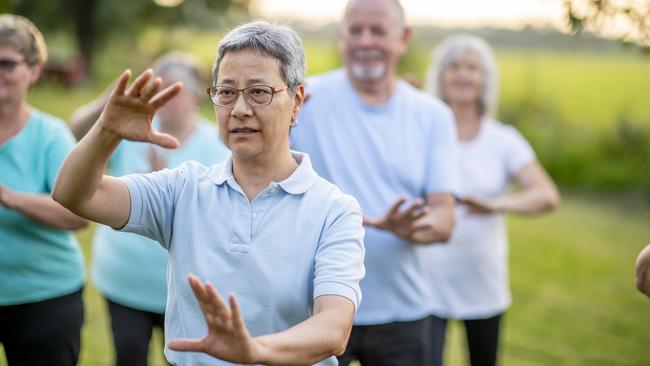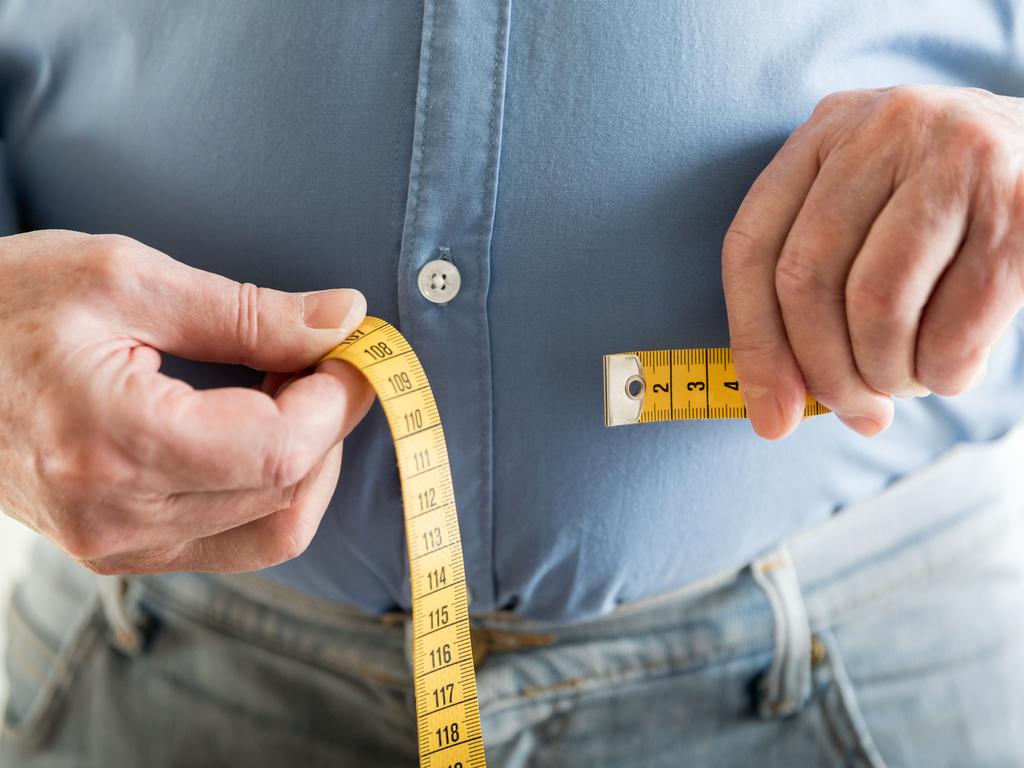Is t’ai chi the secret to a slim waist?
The martial art has been credited with powerful fat-fighting abilities

ITS graceful, fluid movements are the opposite of high-energy gym workouts and yet devotees of t’ai chi, who include the supermodels Gisele Bundchen and Naomi Campbell, swear by its fitness benefits.
Scientists have found that the ancient Chinese martial art can help with everything from balance and memory to sleep and mood, and it has been shown in trials to lower blood pressure, strengthen bones and lessen joint pain. Now research published this week shows that t’ai chi can also be an aid to weight loss.
In a study conducted at the University of Hong Kong and the Chinese University of Hong Kong and published in the journal Annals of Internal Medicine participants were assigned to three groups. One group was prescribed a conventional program of weekly aerobic exercise and strength training, another was asked to follow a t’ai chi plan, and the final one was told to do no exercise beyond their usual daily movement.
After three months participants in the t’ai chi and regular exercise groups had lost modest amounts of weight and had reduced HDL (bad) cholesterol levels compared with the control group but it was the t’ai chi practitioners whose waistlines had shrunk by the most significant amount.
Those practising t’ai chi, which was described as “meditation in motion” by the researchers, lost an average of 1.8cm from their waists after the 12-week program, compared with 1.3cm lost by those doing the weights and aerobic exercise. After 38 weeks both activity groups had maintained the changes in body weight and waist circumference but only the t’ai chi group had maintained their improved blood cholesterol profile.
“Our data suggest that t’ai chi, a gentle mind-body exercise, can be an effective alternative to conventional exercise in the management of central obesity,” wrote the lead author, Parco Siu, of the University of Hong Kong’s school of public health.
It’s not the first time t’ai chi has been associated with weight loss. A previous trial showed that practising five times a week for 45 minutes per session helped middle-aged adults to shed more than 0.5kg on average in 12 weeks when they made no additional lifestyle changes. Tom Watson, a t’ai chi instructor in north London (zhunarts.co.uk), says that he is not surprised by the findings.

“It’s deceptively challenging,” he says. “Because it looks so gentle, most people think it’s easy, but there’s a lot of loading on the leg muscles as you squat and hold a lower stance, as well as some powerful, explosive movements.”
This year Campbell revealed on her weekly YouTube series, No Filter with Naomi, that she tried t’ai chi on a trip to China in 2019 and has been hooked since. “I thought it was going to be easy but it’s so disciplined,” she said. “You’ve got to hold everything, it’s got to be slow-moving. But I loved it — mentally, I loved it.”
Based loosely on the movement patterns of animals — “there are all sorts of animal-inspired stances, including the snake and crane postures,” Watson says t’ai chi is designed to keep your body in constant motion and is all about harnessing your spiritual and mental energy. Its forms or sets of movements range from simple shoulder and arm circles to complex balances and martial-arts kicks and punches, and as with yoga, deep breathing is vital.
“There are many different styles, each with a slightly different take, and there is no end to the variety of movement combinations, so your session can be as short or as complex as you want to make it,” Watson says. “For most people a 20-minute routine every day will give a very good hit of t’ai chi.”
Yang-style t’ai chi, with a focus on relaxation, is a good starting point for beginners, he says, whereas the Chen style, involving slow and fast movements with crouching, kicking and punching, is better suited to the more experienced.
Of course, no form of t’ai chi is as good a calorie-burner as high-intensity interval training or running. It burns only about 108 calories in half an hour, about the same as walking at a moderate pace. But, Watson says, holding the basic stances for stamina and muscle conditioning, such as the horse stance (with knees bent, feet parallel and shoulder-width apart) and bow stance (a bit like a lunge), will develop leg, gluteal and core strength as you maintain the position, and will help your balance. “As you progress you can add punches and dynamic kicks,” he says.
These muscular gains will steadily replace fat and can lead to several other fitness improvements, all of which could help you to lose weight by making exercise easier. A review involving 9263 participants, conducted at the University of Auckland, reported that t’ai chi yielded psychological and physical benefits, including better flexibility, improved lung capacity, balance and even faster running speed.
“A lot of athletes and sportspeople do t’ai chi because of its strength benefits and the way it enhances mental focus,” Watson says.
The well-documented stress-busting effects of t’ai chi also contribute to its usefulness for those trying to lose weight. A 2019 study by a scholar at Arizona University, which looked at the impact on middle-aged women of practising t’ai chi regularly, indicated that it could “potentially reduce weight and improve body composition through psychological, behavioural, and physiological” effects and cut down on overeating by “reducing emotional distress”, which is often a trigger.
Watson says that some of his clients report the same effect after they start the exercise . “One of the big outcomes of regular t’ai chi is that it releases mood-enhancing hormones and stabilises your emotions so that you are less likely to overeat or to give in to cravings,” he says. “Because of this some people find it makes weight loss that much easier.”
The Times







To join the conversation, please log in. Don't have an account? Register
Join the conversation, you are commenting as Logout